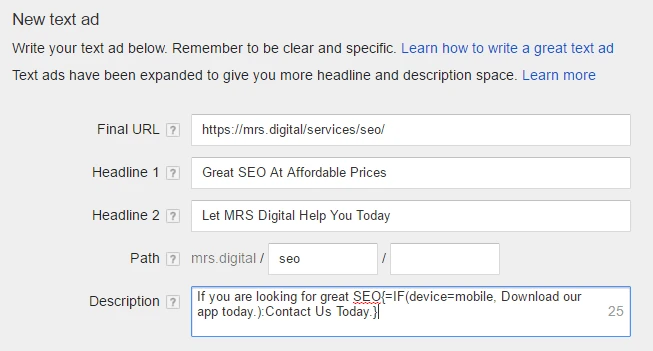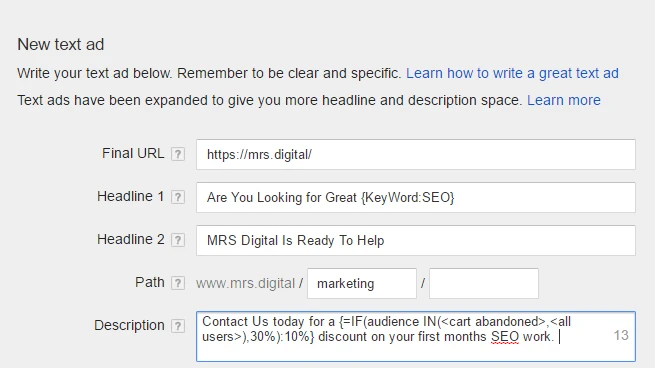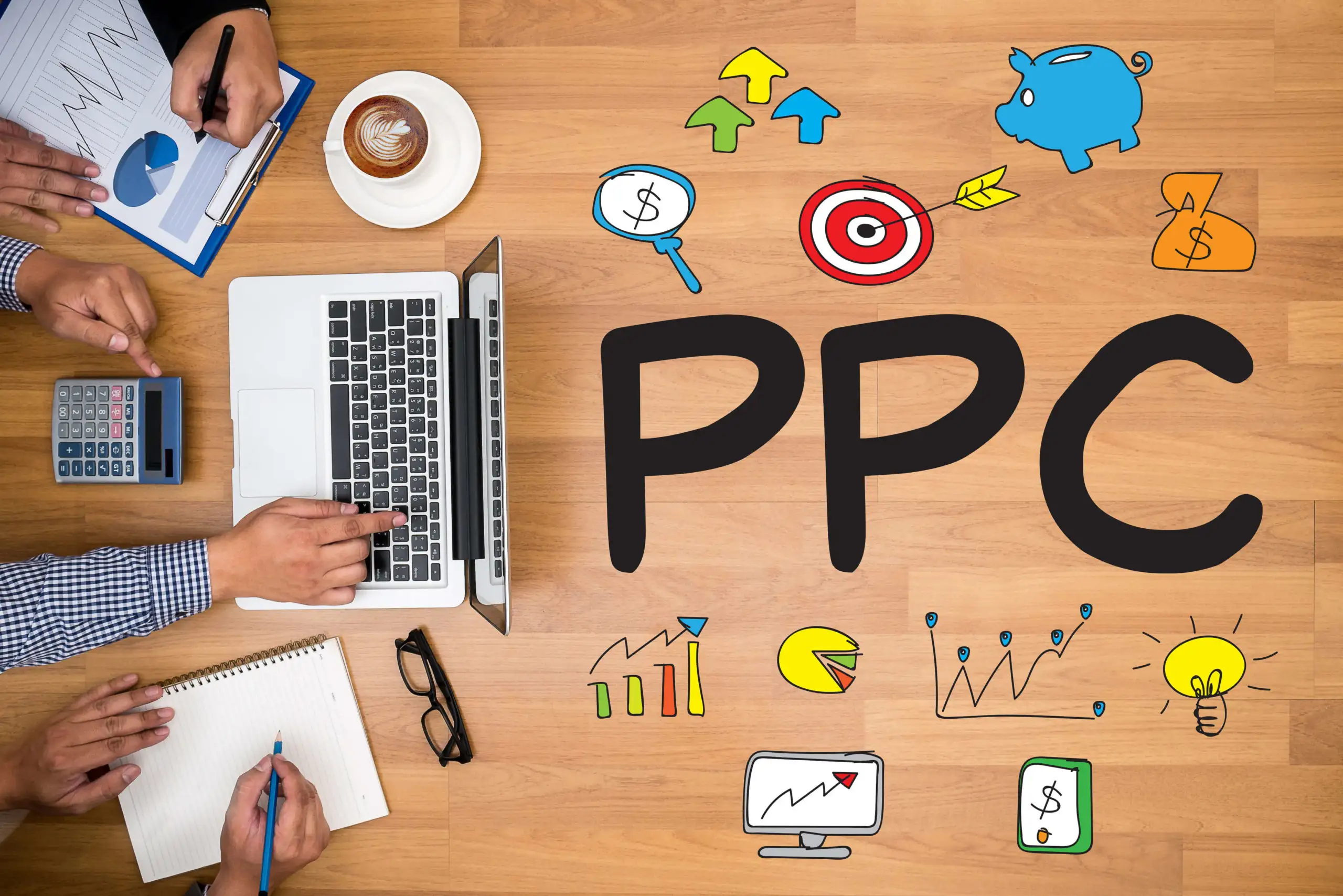If you read any AdWords blogs, you have probably heard about something called IF functions. They have pay per click experts everywhere spinning with excitement in their swivel chairs. The problem is that, unless you are one of those experts, IF functions look a bit like a foreign language. So what are these mysterious IF functions that have PPC lovers spinning with excitement?
The simple answer is that they allow you to insert a specific message in your ad text when a conditions is met and default text when that condition is not met. The new IF functions allow you tailor your ad copy based on the device someone is using or the audience the ad is showing for. That means you get the most targeted ad showing to your potential customers.
What Are The Benefits Of IF Functions?
The main benefit of IF functions is to tailor your advertising message to a specific audience. This could be someone using a mobile device or someone who has visited your site before. For mobile users, you could make the ad shorter and more punchy. You can also add calls to action that appeal to people on mobiles. Google research shows that 50% of mobile users will visit a store after conducting a search. That is compared to only 34% of customers on tablets or desktops. If you have a bricks and mortar store, you could advertise a sale or other offer on mobile to help draw in the mobile users. You could also use radius targeting to reach people on mobiles with deals for a restaurant or other item likely to interest people using portable devices in your area.
If you want to target people who have already been on your site, IF functions can help them as well. The best use for the IF function in this case is to lure a customer back. If they have never been to your site, you can offer them a 10% discount. If they have abandoned a cart, you can increase that discount to 15% or whatever you feel will entice the customer back to finish the buying cycle.
You can also combine the IF audience functionality with mobile bid adjustment to target mobile users who have visited your site previously. This means you can write very targeted mobile copy and direct them to the perfect place on your site.
How Can I Start Using IF Functions Today?
IF functions can currently be used to tailor ads to mobile or remarketing. Mobile tailored IF functions look like this {=IF(device=mobile, TEXT TO INSERT):DEFAULT TEXT} What this tells AdWords is, if the person viewing your ad is on a mobile device, show them the text to insert. If they are viewing the ad from a conventional computer, show them the default text. You can see how it works in the bellow image.

To use IF functions in remarketing you will need to have set up a remarketing list. Once you have done this, you can you an audience based IF function that looks like this {=IF(audience IN(,), TEXT TO INSERT): DEFAULT TEXT} What this tells AdWords is, If the person viewing the ad is in any of the specified lists, they will be shown the text to insert. If the viewer is not in the lists, they will see the default text. This allows you to provide tailored ads to people who have visited your site before. Here is what it would look like in the ad editor.

IF Function Best Practice
The IF functionality has not been around long enough to have been well tested but there are some best practices that will probably apply. These are based on what we know about other functionality currently used on AdWords.
- IF functionality will be most useful in the headline. Keyword insertion ranks best when used in the headlines and this is the most important and visible part of the ad. You can use IF functions in the description but they will most likely have less of an effect.
- IF functionality should be tested against other ads regularly to make sure it is performing up to expectations.
- You should not add IF functionality to existing ads, instead copy the ad and add an IF function to the copy. This provides a sort of AB testing without risking lost impressions.
If you are interested in adding IF functionality to your PPC campaigns, MRS Digital can help. Contact us today to speak with one of our Google AdWords experts about improving your online advertising.






